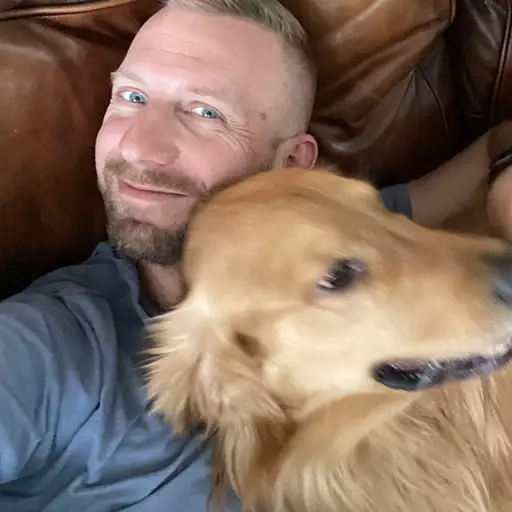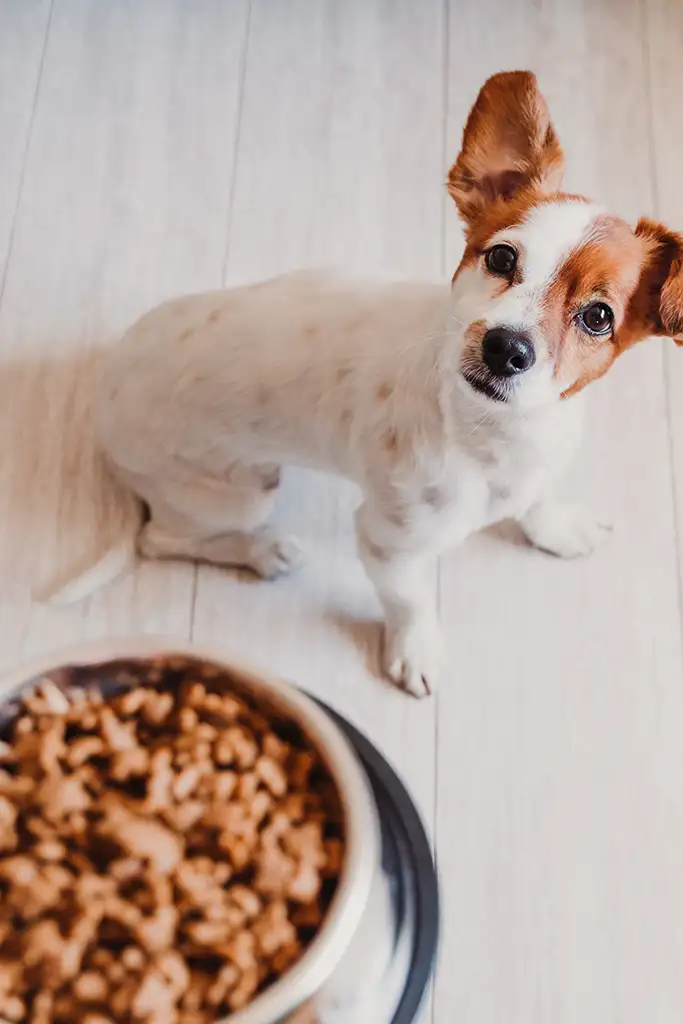How To Fix Dog Food Aggression In Dogs: Our 2024 Guide
Quick Guide
Did you know that almost half of all dogs will show aggression towards other dogs at some point in their lives?
This behavior can be somewhat dangerous and difficult to manage, but it is possible to stop food aggression with the correct information.
In this article, we will explore the causes and symptoms of dog food aggression and seven tips on how to fix the resource guarding dog.
What is Dog Food Aggression?
In the wild, a dog’s ancestors would eat their prey as quickly as possible to prevent other animals from stealing it.
This instinct has carried over into our domesticated dogs, which may show aggression towards other dogs when eating.
Food aggression, a form of resource guarding, can vary from dog growls or snapping when another dog comes near their food bowl to biting another dog.
This type of aggression is usually seen in puppies and young dogs but can happen at any age. It is more common in male dogs than females, and certain breeds are more prone to it than others.
Now that we understand dog food aggression let us discuss warning signs.
Warning Signs of Dog Food Aggression
Curbing this unwanted behavior starts with knowing when your dog is displaying aggression.
Some common warning signs of severe food aggression in dogs include:
- Growling or guarding their food bowl
- Snapping or biting when someone comes near them while they are eating
- Eating quickly or gulping their food down
- Possessiveness over toys or bones
- Getting growly or snappy when you try to take something away from them
Recognizing these warning signs is the first step in managing and correcting dog food aggression.
Not punishing your dog for these behaviors is essential, as this could worsen the aggression.
Some breeds are hereditary prone to aggression, such as the following:
- Pit bulls
- Dobermans
- Chows
- German Shepherds
- Boxers
- Cane Corsos
If you find your dog becoming more aggressive as they age, follow the steps below on how to fix resource guarding.
How to Fix Dog Food Aggression
Let’s now look at eight different tips for addressing resource guarding (food aggression):
#1 : Create a Feeding Schedule
Creating a feeding schedule will help your dog know when it is time to eat and help them feel more relaxed around food.
#2 : Keep Mealtimes Calm (but with you in their presence)
We recommend sitting in the same room as your dog eats their meal but not paying too much attention to them.
Each meal, continue moving just a tad closer until you sit next to them while they eat.
Use a special treat to associate good things with you being close to their food.
#3 : Engage in Conversation
As your dogs eat, use calm conversation to distract them from needing to guard their food.
Do this in conjunction with Step Two.
Continue these two steps until you can pet or touch the dog’s bowl while they are eating without them reacting aggressively.
#4 : Distraction
After you can sit comfortably next to your dog while they eat, start to introduce some distractions.
For this stage, we recommend using treats to lure your dog away from their bowl while eating.
Ask them to sit, lay down or perform a trick to get a treat while simultaneously moving their bowl.
#5 : Teach them to Leave it
Teaching this command to your dog will come in handy for many different situations and help reduce stress levels around food.
Before giving your dog their food, place their bowl a few feet before you and say, “leave it.”
Give them a treat if your dog does not move towards the food.
Once they are in a position in which they do leave it, give them their food bowl and tons of praise.
#6 : Don’t just focus on food
Most dogs with food aggression tend to be possessive over toys and bones.
To help with this, we recommend practicing the same techniques as above with their favorite toys and bones.
Again, the goal is to be able to approach them while they have these items without them feeling the need to guard them.
#7 : Don’t use force or punishment
This cannot be stressed enough, DO NOT use force or punishment when your dog is displaying aggression.
This will only make the aggression worse.
Instead, use the abovementioned techniques to help your dog feel more relaxed around food.
Conclusion
Recognize food aggression early on and use the above tips to help correct the problem.
Remember, never use force or punishment when your dog is food guarding, as this will only worsen the aggression.
By consistently using the above tips, you can help your dog feel more relaxed around food and help to prevent any potential accidents.










